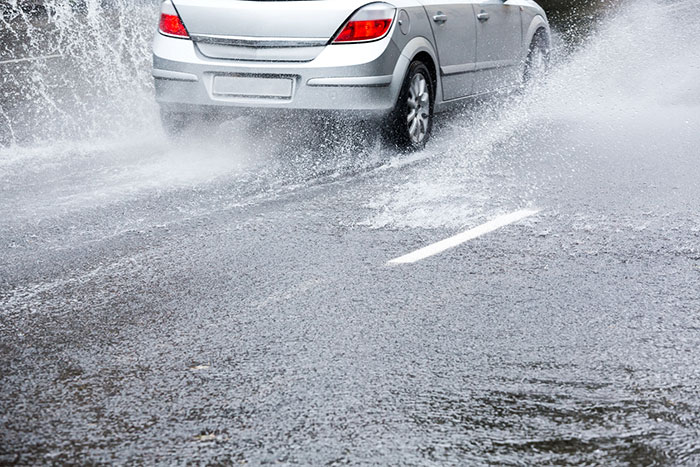
According to the National Road Safety Partnership Program, driving in flood waters is the second deadliest natural hazard Australians face on the road. Even still, each year hundreds of motorists find themselves dangerously trapped in flood waters. As a leading supplier of tyre pressure monitoring systems (TPMS), Safe T Tyre is passionate about keeping Australians safe on the roads. Read on to learn more about the dangers of driving through flooded roads and a few things you can do to stay safe if you find yourself stranded on a water-logged road.
Why Is It Dangerous To Drive Through a Flood?
While the average car weighs around 1.8 tonne, it takes just a small amount of water to make a car float. A standard small hatch, which weighs around one tonne can float in as little as 15 centimetres of water, while a large 4WD which weighs over two tonnes can float in as little as 45 centimetres. 45cm of water is below knee-height for an adult!
Even if you have driven the road before and the water level seems to be manageable, flood waters may be higher, deeper, and faster flowing than they appear. Water can cause your vehicle to lose traction and cause you to lose control. Additionally, what may lie beneath the surface of the water is equally concerning – there may be potholes and debris that can cause significant damage to you and your vehicle.
If you manage to drive through a flooded road, your safety may still be compromised. Moisture on your brake pads can seriously impair your vehicle’s ability to brake suddenly.
How to Deal with Still Water on the Road?
Unpredictable weather can quickly create dangerous situations. If you unexpectedly encounter a flooded road, turn around and go back to safer ground. Driving through water should always be avoided.
If you have no option but do drive over a water-logged road there are few things you can do to stay as safe as possible.
Drive Down the Centre – Roads are designed in a particular way so that water drains to the sides, therefore the water will likely be most shallow at the centre of the road.
Drive Slowly – If you do have to cross water on the road enter at 5km/h then drive at 10 km/h to avoid engine flooding.
Drive in Low Gear – If you’re driving an automatic vehicle, keep the speed low enough to stay in first or second gear.
Only Cross When You’re Certain the Water is Extremely Shallow – Only 15cm of water at any speed can cause you to lose control. Never try and cross water that rises above the centre of your wheels.
Avoid Driving Through Flowing Water
Never, ever attempt to drive through moving water. Many people have been put in dire situations after thinking they could drive through water that was clearly moving. If your wheels lose grip you will have no control and your car will be washed away quickly.
If you are planning a road trip, make sure you research the road conditions along your journey and take a different route if required to avoid any flood waters. If you find yourself needing to cross a flooded road, it is always safer to turn around. Do not attempt to cross it, especially if the water is flowing. In the event that you become caught in a flood and have no way out, call emergency services for help.
Stay Safe on the Road with Safe T Tyre
Your safety is our priority, that’s why we strive to supply high quality tyre pressure monitoring systems (TPMS) at affordable prices. Don’t leave things to chance, a TPMS will alert you to any changes in tyre pressure, significantly improving your on-road safety. Purchase yours today or get in touch with us by calling 1800 876 700.

